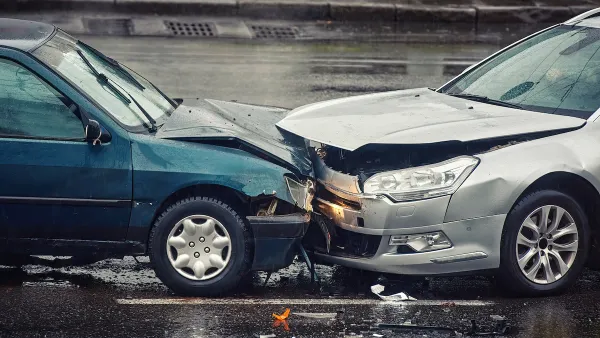Sarah Goodyear describes the greater implications of the carnage caused by a motorist intent on mowing down as many pedestrians as possible on the Venice boardwalk in L.A. on August 03. It wasn't the first time a car caused mayhem in a public space.
The suspect, Nathan Louis Campbell, "allegedly used his car as a weapon". He had driven his car "at an estimated 60 miles per hour through a crowded pedestrian area in the beachfront community, killing one woman and injuring another 11. Witnesses said he appeared to be zigzagging in order to hit as many people as possible."
According to the Los Angeles Times, Campbell, "who was arraigned Tuesday (August 06) afternoon, faces 16 counts of assault with a deadly weapon and 17 counts of hit-and-run, according to the Los Angeles County District Attorney's Office."
He is also charged with murder in the death of Alice Gruppioni, 32, of Italy, who was in Los Angeles on her honeymoon. At least 16 others were injured.
Goodyear contrasts this incident with "the last time that a car invaded pedestrian space in this part of the world – in 2003, when an elderly driver rammed into the Santa Monica Farmers’ Market, killing 10 and injuring 70."
That time was different from this one – it was what people like to call an "accident". The driver, an 86-year-old man, apparently became confused and accelerated into the crowd.
Or was it different? The LA Times article notes that it is being called a "horrible accident" by the public defender.
"I don't believe he intentionally tried to hit anybody," said public defender Philip Dube told the Associated Press. "He's profoundly sad, he is profoundly depressed, that he has potentially ended somebody's life. I think this was a horrible accident."
Goodyear references the 2008 book, Driven to Kill, by J. Peter Rothe, an associate professor at the University of Alberta, that may explain our tendency to label all auto incidents as "accidents", even when they result "when people drive aggressively or vengefully".
On August 11, 1997, the U.S. Department of Transportation’s National Highway Traffic Safety Administration launched a campaign, “Crashes are Not Accidents", to change the thinking about traffic crashes by expunging "accidents" from their terminology. Goodyear wrote on March 11 that "the (New York Police Department) is now replacing the term “accident" with the word “collision."
FULL STORY: When a Car Becomes a Weapon

National Parks Layoffs Will Cause Communities to Lose Billions
Thousands of essential park workers were laid off this week, just before the busy spring break season.

Retro-silient?: America’s First “Eco-burb,” The Woodlands Turns 50
A master-planned community north of Houston offers lessons on green infrastructure and resilient design, but falls short of its founder’s lofty affordability and walkability goals.

Delivering for America Plan Will Downgrade Mail Service in at Least 49.5 Percent of Zip Codes
Republican and Democrat lawmakers criticize the plan for its disproportionate negative impact on rural communities.

Test News Post 1
This is a summary

Test News Headline 46
Test for the image on the front page.

Balancing Bombs and Butterflies: How the National Guard Protects a Rare Species
The National Guard at Fort Indiantown Gap uses GIS technology and land management strategies to balance military training with conservation efforts, ensuring the survival of the rare eastern regal fritillary butterfly.
Urban Design for Planners 1: Software Tools
This six-course series explores essential urban design concepts using open source software and equips planners with the tools they need to participate fully in the urban design process.
Planning for Universal Design
Learn the tools for implementing Universal Design in planning regulations.
EMC Planning Group, Inc.
Planetizen
Planetizen
Mpact (formerly Rail~Volution)
Great Falls Development Authority, Inc.
HUDs Office of Policy Development and Research
NYU Wagner Graduate School of Public Service



























